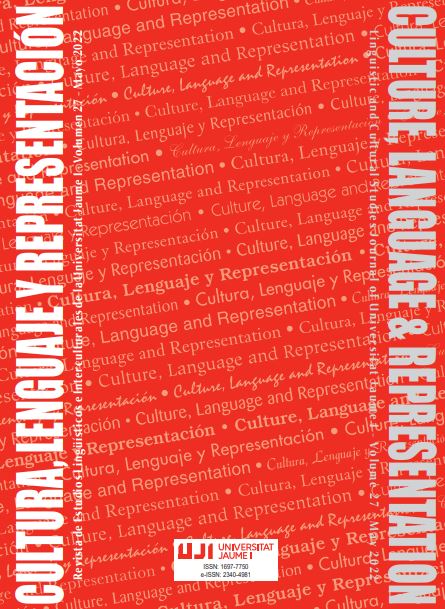exile of the soul in the children's story The Adventures of Pinocchio
Main Article Content
Abstract
In The Adventures of Pinocchio (1883) one of the fundamental sacred stories reappears: Carlo Collodi presents the theme of the exile of paradise and the vicissitudes to recover it. The text combines the form of the myth with rigor and clarity along with the simplicity and humor of the children's story. We read the book in relation to Paul Ricœur's theory of the symbol, particularly with the methodological support of Finitud y culpabilidad (1960) and the first presentation of the symbols of evil, as indirect discourse. The mythical exposition of the problem of a religious and philosophical nature brings into play the question of identity; the presence of evil requires personal definition. We relate the journey of the protagonist's soul to the course of national history and consider the answer in parallel; the symbols of evil originally interpellate to order the course of personal and historical life.
Downloads
Article Details
An open-access CREATIVE COMMONS copyright license is used. Those authors whose works are published by this journal, accept the following terms:
- Authors will retain their copyright and guarantee the Journal the right to first publish their work, which will simultaneously be subject to the Creative Commons Recognition License CC BY SA that allows third parties to share the work, provided that its author and first publication is indicated.
- Authors may adopt other non-exclusive license agreements for the distribution of the published version of the work (e.g., deposit it in an institutional telematics file or publish it in a monographic volume) provided that the initial publication in this journal is indicated.
- Authors are allowed and recommended to disseminate their work over the Internet (e.g. in institutional telematics files or on their website) before and during the submission process, which can produce interesting exchanges and increase quotes of the published work.
References
Eliade, Mircea. 1963. Aspects du mythe. París: Gallimard.
Eliade, Mircea. 1967. Lo sagrado y lo profano. Madrid: Guadarrama.
Fazio, Mariano. 2015. Historia de las ideas contemporáneas. Una lectura del proceso de secularización. Madrid: Rialp.
García Bazán, Francisco. 2000. Aspectos inusuales de lo sagrado. Madrid: Trotta.
Georges, Jean. 1981. Le pouvoir des Contes. Paris: Casterman.
González Varela, Sergio.2011. "Mimos y payasos de Coyoacán como figuras liminales del trickster en antropología. Reflexiones sobre el juego y la experiencia lúdica". Nueva antropología, 24, (75): 9-26.
Huelva Unternbäumen, Enrique. 2019. “En los vértices del tiempo. Metáforas conceptuales del tiempo y sus variaciones en la poesía y el pensamiento filosófico”. Cultura, lenguaje y representación, Revista de estudios culturales de la Universitat Jaume I, XXII: 75–97. DOI: HTTP//DX.DOI.ORG/10.6035/CLR.2019.22.5
Jung, Carl. 1931. Essai de Psychologie analytique. Traduit par Yves Le Lay. Préface d'Edmond Jaloux. Paris; Stock.
Langer, Beryl. 2002. “Commodified Enchantment: Children and Consumer Capitalism”. Thesis Eleven, 69(1): 67-81. DOI: 10.1177/0725513602069001005
Campbell, Joseph. 1959. El héroe de las mil caras. Psicoanálisis del mito. México. Fondo de Cultura Económica.
Marcheschi Daniela.1990. Collodi ritrovato Pisa: ETS editrice.
Molina Castillo, Fernando. 2012. “Le avventure di Pinocchio: Dal Giornale per i bambini all’Edizione nazionale”. Quaderns d’Italià 17: 183-187
Pezzini Isabella, Fabbri Paolo. (ed.) 2002. Le avventure di Pinocchio. Tra un linguaggio e l'altro. Roma: Meltemi.
Plato. 2001. Laws, trans. R.G. Bury Loeb Classical Library, vols. 10 and 11, nos.187 and 192. Cambridge, MA: Harvard University Press.
Prat Ferrer, Juan José. 2008. Bajo el árbol del paraíso: Historia de los estudios sobre el folklore y sus paradigmas. Madrid: CSIC.
Propp, Vladimir. 1977. Las raíces históricas del cuento. Madrid: Fundamentos.
Propp, Vladimir. 2008. Morfología del cuento. México: Colofón S.A.
Ricœur, Paul. 1960. Philosophie de la Volonté, tomo II: Finitude et culpabilité, parte II: La Simbolique du Mal. Paris: Aubier, Éditions Montaigne.
Ricœur, Paul. 1965. De l’interprétation. Essai sur Freud. Paris: Éditions du Seuil.
Ricœur, Paul. 1969. Le Conflit des Interprétations, Essais d’herméneutique. Paris: Editions du Seuil.
Sapegno, Natalino. 1964. Historia de la literatura italiana. Barcelona: Labor.
Strauss, Leo. 1964. The City and Man. Chicago: Rand McNally and Co.
Wilson, Jeffrey D. 2016. “Pinocchio and the Puppet of Plato’s Laws”. In Geoffrey C. Kellow, Neven Leddy (Eds.) On Civic Republicanism Book Subtitle: Ancient Lessons for Global Politics University of Toronto Press.
Zipes, Jack. 1996. “Towards a Theory of the Fairy-Tale Film: The Case of Pinocchio”. The Lion and the Unicorn 20(1):1-24. DOI:10.1353/uni.1996.0004


